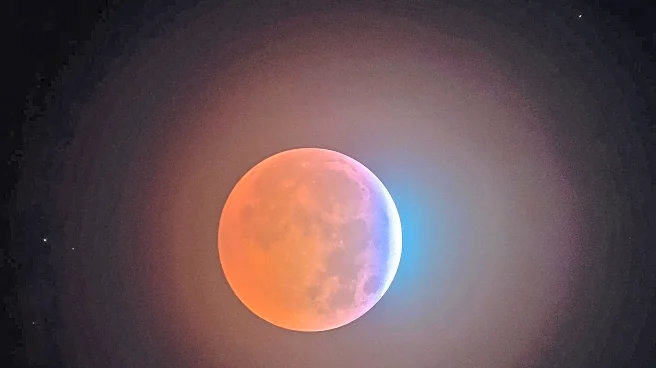What's Happening?
On November 5, 2025, the largest supermoon of the year, known as the Beaver Moon, was visible across North America. This supermoon was approximately 221,817 miles from Earth, making it the closest of the year.
The moon appeared larger and brighter, especially when near the horizon, where it took on a yellow-orange hue. Observers were encouraged to find elevated locations or open fields for the best view. The event was also available for viewing via a livestream from the Virtual Telescope Project.
Why It's Important?
Supermoons are significant for their visual impact and the public interest they generate in astronomical phenomena. They provide an opportunity for educational outreach and community engagement, as people gather to observe and learn about the moon and its cycles. The event also has cultural and historical significance, as the Beaver Moon name reflects traditional practices and the natural calendar. For photographers and artists, supermoons offer a unique subject, inspiring creative works and media coverage.
What's Next?
Following this supermoon, another is expected in December 2025, continuing the series of celestial events that captivate public interest. Astronomers and educators may use these opportunities to promote science education and awareness. Communities might organize viewing events or educational programs to engage the public and foster a deeper appreciation for astronomy.











